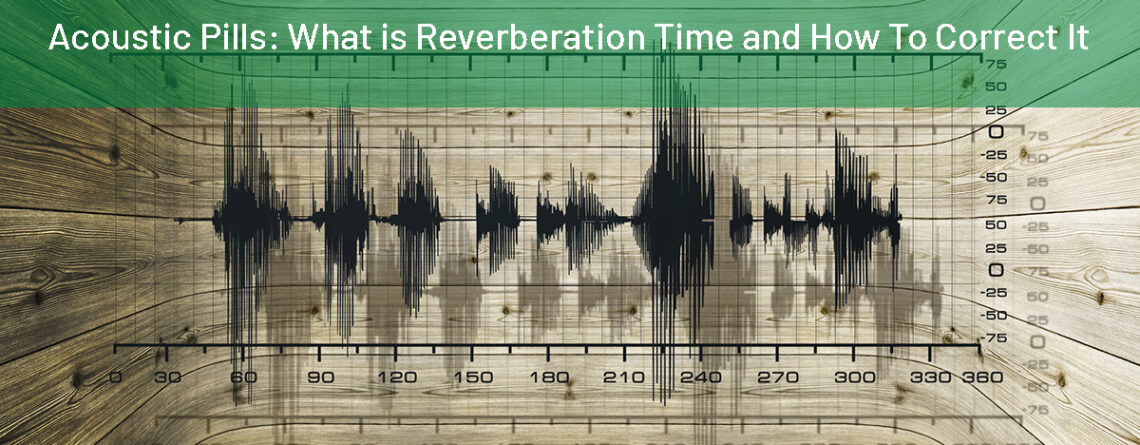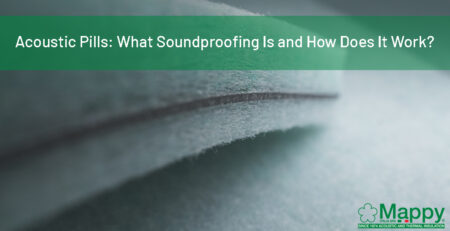What is Reverberation Time and How To Correct It
Reverberation time is one of the most important indicators to evaluate the acoustic comfort of a room and to measure the performance of an acoustic intervention aimed at limiting the perceived “rumble”.
The reverberation time of a room (in acoustics represented by the letter T), in approximate terms, is the time needed for a noise generated into the environment to become imperceptible, or in other words, that the originated sound waves exhaust their propagation force.
First of all, reverberation time depends on the size of the room, but also on the capacity of the surfaces and elements inside it (walls, ceiling, curtains, furniture, etc.) to reflect or absorb the sound waves, making the environment more or less acoustically comfortable. Indeed, a room characterized by high reverberation times, also said “rumble”, makes it difficult to understand the sounds inside of it.
The reverb greatly depends also on physical and environmental characteristics of the room and the frequencies of the sound generated within it. Normally, a furnished residential environment is characterized by an average reverberation time of about 0.5 seconds. The same environment, completely empty, can have values of T even higher than 1.5 seconds.
Normative indications in Italy
Reverberation time is an important issue to take into consideration not only in terms of living comfort in spaces designed with particular attention to acoustics, but it is often a factor required by regulations in a country.
In Italy, the law governing reverberation in public buildings is DPCM 5/12/1997. The decree prescribes the limit values to be respected, which, for example, are equal to 1.2 seconds for classrooms and 2.2 seconds for gyms. The decree can be accompanied by further requirements defined by local legislation (e.g. building regulations and Regional Laws), or any request coming from by the customer.
Therefore, before carrying out interventions in the acoustic field involving public buildings, best practice requires the verification of limits imposed by the local legislation.
What are the solutions to correct reverberation?
“Acoustic correction” of an environment, as defined by professionals in the field, can be performed putting alongside the wall or ceiling materials or sound-absorbing systems capable to reduce the bounce of sound waves, thus limiting the propagation through the absorption of force.
The three main solutions are:
• Installation of sound-absorbing panels;
• Manufacturing of false ceilings or sound-absorbing walls;
• Application of sound-absorbing plasters.
Each solution is characterized by specific performances that vary according to the kind of material used and the type of environment that requires the acoustic intervention.
It is therefore important to contact an expert able to identify the most suitable solution and to evaluate the acoustic variables of an area affected by reverberation to obtain optimal results. Moreover, in the case of acoustic correction of existing environments, it may be especially useful to perform a phonometric measurement before the beginning of the intervention, so that it can be compared after completion.
Fonte: a cura di Mappy Italia SpA, info@mappyitalia.com
© RIPRODUZIONE RISERVATA






